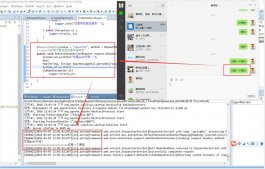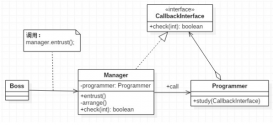spring中@profile与maven中的profile很相似,通过配置来改变参数。
例如在开发环境与生产环境使用不同的参数,可以配置两套配置文件,通过@profile来激活需要的环境,但维护两套配置文件不如maven中维护一套配置文件,在pom中通过profile来修改配置文件的参数来的实惠。
也有例外,比如我在开发中调用商城接口经常不能返回我需要的数据,每次都需要mock数据,所以我写了一个mock参数的借口调用类,在开发环境中就使用这个类,测试环境与生产环境则使用正常的借口调用类,这样就不用每次开发的时候去手动改一些代码。
注:@profile在3.2以后的版本支持方法级别和类级别,3.1版本只支持类级别。
言归正传,说下@profile使用方法。
一、注解配置
|
1
2
3
4
5
6
7
8
9
10
11
12
13
14
15
16
17
18
19
20
21
22
23
24
25
26
27
28
29
|
/** 配置生产环境调用类 **/@service("productRpc") @profile("prop") public class ProductRpcImpl implements ProductRpc public String productBaseInfo(Long sku){ return productResource.queryBaseInfo(Long sku); } } /** 配置生产环境调用类 **/@service("productRpc") @profile("dev") public class MockProductRpcImpl implements ProductRpc public String productBaseInfo(Long sku){ return “iphone7”; } } /** 调用类 **/public class Demo(){ @Resource(name="productRpc") private ProductRpc productRpc; public void demo(){ String skuInfo = productRpc.productBaseInfo(123123L); logger.info(skuInfo); } } |
这样就完成了基于注解的profile配置。当配置为生产环境的时候会正常调用接口,当为开发环境的时候回调用mock接口。
二、XML配置
|
1
2
3
4
5
6
7
8
9
|
<!-- 开发环境 --><beans profile="dev"> <bean id="beanname" class="com.pz.demo.ProductRPC"/> </beans> <!-- 生产环境 --><beans profile="dev"> <bean id="beanname" class="com.pz.demo.MockProductRPC"/> </beans> |
三、激活profile
注:spring在确定那个profile处于激活状态的时,需要依赖两个独立的属性:spring.profiles.active和spring.profile.default。如果设置了spring.profiles.actives属性,那么它的值就会用来确定那个profile是激活的。如果没有设置spring.profiles.active属性的话,那spring将会查找spring.profiles.default的值。如果spring.profiles.active和spring.profiles.default均没有设置。(红色部分未在项目中验证成功,待测试)
1.在servlet上下文中进行配置(web.xml)
|
1
2
3
4
|
<context-param> <param-name>spring.profiles.default</param-name> <param-value>dev</param-value> </context-param> |
2.作为DispatcherServlet的初始化参数
|
1
2
3
4
5
6
7
8
9
10
11
12
13
|
<servlet> <servlet-name>springMVC</servlet-name> <servlet-class>org.springframework.web.servlet.DispatcherServlet</servlet-class> <init-param> <param-name>contextConfigLocation</param-name> <param-value>classpath:/spring-servlet.xml</param-value> </init-param> <init-param> <param-name>spring.profiles.default</param-name> <param-value>dev</param-value> </init-param> <load-on-startup>1</load-on-startup> </servlet> |
3.spring-junit使用@ActiveProfiles进行激活
|
1
2
3
4
5
6
|
@RunWith(SpringJUnit4ClassRunner.class) @ContextConfiguration(locations = "/spring-config.xml") @ActiveProfiles("dev") public class MainTest { ... } |
4.作为JNDI条目
5.作为环境变量
6.作为JVM的系统属性
以上就是本文的全部内容,希望对大家的学习有所帮助,也希望大家多多支持服务器之家。
原文链接:http://www.cnblogs.com/goody9807/p/7660480.html?utm_source=tuicool&utm_medium=referral















